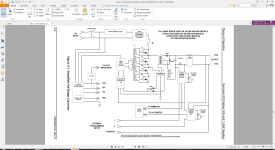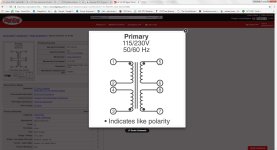methods
1 GW
Wow...
So going over that section (ending about 13:50) we can pretty much figure out what is going on in our supply:
* Big square Filter Cap
* Common mode Choke
* Two small caps, each side down to common earth
Repeat
* Big square Filter Cap
* Common mode Choke
* Two small filter caps to ground
... then off the board as a pair of heavy wires (heavy enough to run 120V at double the 240V current)

...
See?
A little patience
A little clever searching (really just referencing the RIGHT SOURCE)
And a solid 10% of our reverse engineering... IS DONE.
Pieces of the puzzle?
Well... like knowing that running capacitors in series WILL double your working voltage (1st order), WILL halve your working capacitance (like resistors in parallel - same formula) - (1st order) ... but second order... we are not guaranteed an equal split of voltage ... and we know that ohms law dictates that voltages in parallel must be equal... so...
(from the video - if you are not tracking me)
We see that we can add a basic voltage divider in parallel with the stacked caps to help urge them to evenly split the load.
SWEET -> Been doing this 18 years and thats the first I have seen it put so simply - on a working product.
(yea - seen a lot of theory - but this is the real deal! Value Engineered, highly reliable, variable power supply.
....
So why so much noise filtering?
Its not (I am guessing...) to keep noise out
Its to keep the noise IN
.. Likely due to regulations around the amount of noise that a product is allowed to barf back into Mains and Radiate into other components - RIGHT?
(yep - UL Certification sort of stuff)
Anything to do with safety?
(Nope - will work just fine without that crap... So short it out if you have to and see :x )
Where is the fusing?
Strangely the fusing (re-settable breaker ) is down stream at the front panel. I guess the 2 flavors of caps and 1 flavor of choke are robust enough that we can rely on the AC Mains Breaker to terminate a dump before fire starts.
-methods
So going over that section (ending about 13:50) we can pretty much figure out what is going on in our supply:
* Big square Filter Cap
* Common mode Choke
* Two small caps, each side down to common earth
Repeat
* Big square Filter Cap
* Common mode Choke
* Two small filter caps to ground
... then off the board as a pair of heavy wires (heavy enough to run 120V at double the 240V current)

...
See?
A little patience
A little clever searching (really just referencing the RIGHT SOURCE)
And a solid 10% of our reverse engineering... IS DONE.
Hollywood is total BULLSHIT.
In real life... nobody is a super hero
Everybody is weak and flawed
... (except Elon)
A real life Reverse Engineer has to earn it... so if you want to "be one" - this is part of it.
Before you get here, what you want is a solid education - a piece of paper - from the best school you can get into. That will lay the groundwork for you to piece together the puzzle.
Pieces of the puzzle?
Well... like knowing that running capacitors in series WILL double your working voltage (1st order), WILL halve your working capacitance (like resistors in parallel - same formula) - (1st order) ... but second order... we are not guaranteed an equal split of voltage ... and we know that ohms law dictates that voltages in parallel must be equal... so...
(from the video - if you are not tracking me)
We see that we can add a basic voltage divider in parallel with the stacked caps to help urge them to evenly split the load.
SWEET -> Been doing this 18 years and thats the first I have seen it put so simply - on a working product.
(yea - seen a lot of theory - but this is the real deal! Value Engineered, highly reliable, variable power supply.
....
So why so much noise filtering?
Its not (I am guessing...) to keep noise out
Its to keep the noise IN
.. Likely due to regulations around the amount of noise that a product is allowed to barf back into Mains and Radiate into other components - RIGHT?
(yep - UL Certification sort of stuff)
Anything to do with safety?
(Nope - will work just fine without that crap... So short it out if you have to and see :x )
Where is the fusing?
Strangely the fusing (re-settable breaker ) is down stream at the front panel. I guess the 2 flavors of caps and 1 flavor of choke are robust enough that we can rely on the AC Mains Breaker to terminate a dump before fire starts.
-methods





